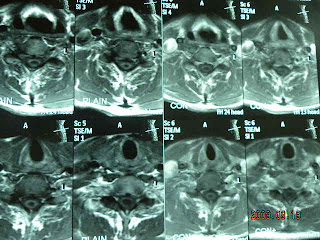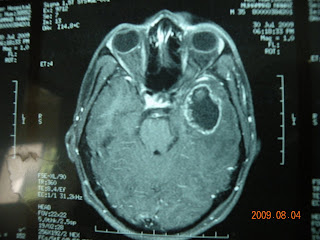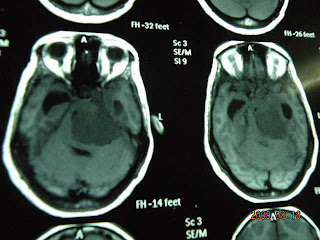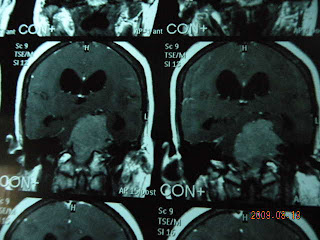Men ought to know that from nothing else but the brain come joys, delights, laughter and sports, and sorrows, griefs, despondency, and lamentations. ... And by the same organ we become mad and delirious, and fears and terrors assail us, some by night, and some by day, and dreams and untimely wanderings, and cares that are not suitable, and ignorance of present circumstances, desuetude, and unskilfulness. All these things we endure from the brain, when it is not healthy…
Man is gifted with this wonderful organ ''the Brain" which has put him on the superior rankings among any bilogical creatures . The complexities and the rapidity with which it works is beyond the imagination . In recent decades so much has been studied on both anatomical and physiological arrays of its phenomenon . Lots of questions been answered along with lots of questions still at a bay.
Concepts of Mind and Brain has been explored a lot; dualism , materialism and idealism are the theories explained. Computational neuroscience is another field of interest . Learning and memory are the key function of brain and so much research and studies has been done yet lots been still to be explored. In contrary the famous idiom "learning by heart" still exists.
Brain is like the universe expanding in itself with evolution and the more we go indepth the more secrets are revealed . Stem cell research and the fact that there exists the adult stem cell in paraventricular area of brain has compelled us to rethink that nerve cell do not regenerate at all. Similarly concept of Mirror neuron has opened a new door step .
Thousands of research may be going on at this particular moment of time with no wonder thousands of them in vain . The pace of current scientific research and the breakthroughs is just remarkable . Miracles do happen and its happening . Its just a matter of time.
Wednesday, August 19, 2009
Tuesday, August 18, 2009
Chiari malformation







Scan of Chiari malformation I cerebellar tonsil herniation associated with syringohydromyelia
Chiari Malformations:
Type I
-Caudal decent of cerebellar descent inferior to plane of foramen magnum >3-5mm
- rarely below C2
- not assciated with myelomeningocele
-hydrocephalus in <10%
Type II
- Caudal descent of cerebellar vermis and lower brainstem
-commonly seen below C2
-multiple posterior fossa and cerebellar abnormalities associated with hindbrain hernias including beaking of the dorsal midbrain , enlargement of massa intermedia , medullary kinking , hypoplasia of tentorium
-hydrocephalus >90%
-in conjuction with meningomyelocele very common
Type III
-rare
-protrusion of sac from craniocervical junction that contains portion of cerebellum and brainstem
-associated with hydrocephalus
Type IV
severe hypoplasia or aplasia of cerebellum associated with a diminutive posterior fossa
Many theories have been developed to explain the Chiari malformations and currently the most appealing theory emphasizes in difficulty in rapidly equilibrating the CSF pressure wave between the posterior fossa and cervical subarachnoid space seen during the valsalva maneuver.
Friday, August 14, 2009
Thursday, August 13, 2009
Mirror Neurons
Some scientists speculate that a mirror system in people forms the basis for social behavior, for our ability to imitate, acquire language, and show empathy and understanding. It also may have played a role in the evolution of speech. Mirror neurons were so named because, by firing both when an animal acts and when it simply watches the same action, they were thought to "mirror" movement, as though the observer itself were acting.
Advances in the past few years have newly defined different types of mirror neurons in monkeys and shown how finely tuned these subsets of mirror neurons can be. New studies also have further characterized abnormal-as well as normal-mirror activity in the brains of children with the social communication disorder known as autism, suggesting new approaches to treatment.
Other findings show that mirror neuron activity is instrumental for interpreting the facial expressions and actions of others but may not be sufficient for decoding their thoughts and intentions.
Recordings from the typically developing children showed similar patterns of suppression during the two tasks, indicating that mirror neuron activity is fully developed by age 7.
In contrast, recordings from the children with autism showed that mu rhythms were enhanced during both tasks. Enhancement is an indication that the mirror neuron system is disengaged. However, because the children still were able to perform the task, Pineda says, "we propose that children with autism develop alternative, non-mirror neuron-based coping strategies for understanding facial expressions and interpreting others' mental states." He suggests that "these compensatory strategies involve inhibition of residual mirror neuron functioning."
"This idea implies that a retraining of mirror neurons to respond appropriately to stimuli and integrate normally into wider circuits may reduce the social symptoms of autism."
Advances in recording brain activity also have made possible findings showing that mirror systems are active even when we are not observing an action with an eye to repeating it.
Suresh Muthukumaraswamy, PhD, at Cardiff University, found that the mirror system is activated when we watch specific actions, even when we are concentrating on a separate task.
Brain activity was recorded as the subjects passively watched a sequence of finger movements, watched the movements knowing they would be asked to repeat them, added up the number of fingers moved as they watched, and performed the sequence of movements themselves.
Results from these recordings showed similar activity when the subjects performed the movement sequence and when they watched someone else do it. In addition, Muthukumaraswamy noted increased activity in areas of the brain regulating motor activity when subjects observed the movements knowing they would later do them, and when they added up the number of fingers used, compared with passive watching.
"These data suggest that activity of human mirror neuron systems is generally increased by attention relative to passive observation, even if that attention is not directed toward a specific motor activity," says Muthukumaraswamy. "Our results suggest that the mirror system remains active regardless of any concurrent task and hence is probably an automatic system.
"A good scientific understanding of the properties of the mirror system in normal humans is important," he adds, "because this may help to understand clinical disorders such as autism where the mirror system may not be functioning normally."
Other findings based on EEG recordings provide the first evidence of normal mirror activity in children with autism: People familiar to children with autism may activate mirror areas of the brain in normal patterns when unfamiliar people do not.
The mirror neuron system may react to stimuli that the observer sees as "like me." If this is the case, "perhaps typical individuals apply this identification to all people (both familiar and unfamiliar), resulting in activation of these areas in response to the observed stimuli, while individuals on the autism spectrum only consider familiar individuals (including themselves) as 'like me,' " she says.
This evidence for normal mirror neuron activity in autistic children may indicate that mirror system dysfunction in these cases reflects an impairment in identifying with and assigning personal significance to unfamiliar people and things, Oberman suggests. Whether deficits in relating to unfamiliar people that are characteristic of autism are the cause or the result of a dysfunctional mirror neuron system is unclear.
Advances in the past few years have newly defined different types of mirror neurons in monkeys and shown how finely tuned these subsets of mirror neurons can be. New studies also have further characterized abnormal-as well as normal-mirror activity in the brains of children with the social communication disorder known as autism, suggesting new approaches to treatment.
Other findings show that mirror neuron activity is instrumental for interpreting the facial expressions and actions of others but may not be sufficient for decoding their thoughts and intentions.
Recordings from the typically developing children showed similar patterns of suppression during the two tasks, indicating that mirror neuron activity is fully developed by age 7.
In contrast, recordings from the children with autism showed that mu rhythms were enhanced during both tasks. Enhancement is an indication that the mirror neuron system is disengaged. However, because the children still were able to perform the task, Pineda says, "we propose that children with autism develop alternative, non-mirror neuron-based coping strategies for understanding facial expressions and interpreting others' mental states." He suggests that "these compensatory strategies involve inhibition of residual mirror neuron functioning."
"This idea implies that a retraining of mirror neurons to respond appropriately to stimuli and integrate normally into wider circuits may reduce the social symptoms of autism."
Advances in recording brain activity also have made possible findings showing that mirror systems are active even when we are not observing an action with an eye to repeating it.
Suresh Muthukumaraswamy, PhD, at Cardiff University, found that the mirror system is activated when we watch specific actions, even when we are concentrating on a separate task.
Brain activity was recorded as the subjects passively watched a sequence of finger movements, watched the movements knowing they would be asked to repeat them, added up the number of fingers moved as they watched, and performed the sequence of movements themselves.
Results from these recordings showed similar activity when the subjects performed the movement sequence and when they watched someone else do it. In addition, Muthukumaraswamy noted increased activity in areas of the brain regulating motor activity when subjects observed the movements knowing they would later do them, and when they added up the number of fingers used, compared with passive watching.
"These data suggest that activity of human mirror neuron systems is generally increased by attention relative to passive observation, even if that attention is not directed toward a specific motor activity," says Muthukumaraswamy. "Our results suggest that the mirror system remains active regardless of any concurrent task and hence is probably an automatic system.
"A good scientific understanding of the properties of the mirror system in normal humans is important," he adds, "because this may help to understand clinical disorders such as autism where the mirror system may not be functioning normally."
Other findings based on EEG recordings provide the first evidence of normal mirror activity in children with autism: People familiar to children with autism may activate mirror areas of the brain in normal patterns when unfamiliar people do not.
The mirror neuron system may react to stimuli that the observer sees as "like me." If this is the case, "perhaps typical individuals apply this identification to all people (both familiar and unfamiliar), resulting in activation of these areas in response to the observed stimuli, while individuals on the autism spectrum only consider familiar individuals (including themselves) as 'like me,' " she says.
This evidence for normal mirror neuron activity in autistic children may indicate that mirror system dysfunction in these cases reflects an impairment in identifying with and assigning personal significance to unfamiliar people and things, Oberman suggests. Whether deficits in relating to unfamiliar people that are characteristic of autism are the cause or the result of a dysfunctional mirror neuron system is unclear.
Thursday, August 6, 2009
Buddhism and Science
Mereological Nihilism ( Metaphysical theory ) is a scientific view point that no objects truly exists they exists as individual parts. Simply Mereology is the theory of relationship between parts and whole and Nihilism is the traditional belief that objects do not exist. And so Mereological nihilism is the traditional way of denying daily objects that exists . It says that the individual objects that we see doesn't exist as such but exist as a small partcles and so what we see is what we perceive and what is interpreted in our brain .
So whatever we see is an illusion thats what Buddhism says. The world we see is an illusion and we are driven in all aspects by this illusion . Since we can't see the object as small particles of atoms this illusion is acknowledgable. So nothing exists as objects in this world everything in particles that is independent . No form exists . Form is emptiness .
Quantum physics also agrees. Both observer and observant are equally important . It depends how an object is approached as explained by quantum physics about wave particle duality . Quantum physics also says that a phenomenon can't be observed without changing or disturbing it that means what ever we perceive in real life is not infact real but an illusion . Buddhism says if ultimately all phenomenon arises from the term and conditions from which they appear then no phenomenon truly exists.
Lets talk about Meditation. Meditation although unknown in origin has been in practice since ancient times . From an observer point of view theres two way one can participate in Mediatation a ) Analytical (deep thinking about an object or concept) b) Stabilizing (repetition of words or actions) . By either way goal of meditation is to clear the minds of all external thoughts by focussing on breathing or body. This clearing of mind allows and individual to become self aware and person enters a higher state of conciousness. In this state a person's mind is essentially empty absorbed into complete nothingness of repititive breathing or other sensation . This state of ultimate meditation is the goal of Buddhism renouncing all possesions and desires . Having nothing...... Wanting nothing....... By mediataion one can train his mind to become empty allowing him to pass misperception that clouds reality. So Meditation is in practice to alleviate stress and anger.
It has been proved that meditation can actually change the way the brain is wired. Realising that both mind are brain are dependent to each other mind can't affect the brain and brain can't change the mind. But brain can change because without some force influencing the mind it is life less. The only explanation what scientists have given is what Buddhist have been practicing for 100 of years........... CONCIOUSNESS is what can change the brain and mind. And it has been scientifically proven by various neurological tests performed on the monks.
So Meditation , Quantum physics and Metaphysics like Mereological Nihilism can be explained by both Buddhism and science. This has drawn attention to researchers to unification of science and Buddhism to develop a fundamantal principle of life and esistence...... and reality. This can lead us to the basics of understanding of universe .
Our understanding of neuroscience will be enchanced. Its only matter of time .............
So whatever we see is an illusion thats what Buddhism says. The world we see is an illusion and we are driven in all aspects by this illusion . Since we can't see the object as small particles of atoms this illusion is acknowledgable. So nothing exists as objects in this world everything in particles that is independent . No form exists . Form is emptiness .
Quantum physics also agrees. Both observer and observant are equally important . It depends how an object is approached as explained by quantum physics about wave particle duality . Quantum physics also says that a phenomenon can't be observed without changing or disturbing it that means what ever we perceive in real life is not infact real but an illusion . Buddhism says if ultimately all phenomenon arises from the term and conditions from which they appear then no phenomenon truly exists.
Lets talk about Meditation. Meditation although unknown in origin has been in practice since ancient times . From an observer point of view theres two way one can participate in Mediatation a ) Analytical (deep thinking about an object or concept) b) Stabilizing (repetition of words or actions) . By either way goal of meditation is to clear the minds of all external thoughts by focussing on breathing or body. This clearing of mind allows and individual to become self aware and person enters a higher state of conciousness. In this state a person's mind is essentially empty absorbed into complete nothingness of repititive breathing or other sensation . This state of ultimate meditation is the goal of Buddhism renouncing all possesions and desires . Having nothing...... Wanting nothing....... By mediataion one can train his mind to become empty allowing him to pass misperception that clouds reality. So Meditation is in practice to alleviate stress and anger.
It has been proved that meditation can actually change the way the brain is wired. Realising that both mind are brain are dependent to each other mind can't affect the brain and brain can't change the mind. But brain can change because without some force influencing the mind it is life less. The only explanation what scientists have given is what Buddhist have been practicing for 100 of years........... CONCIOUSNESS is what can change the brain and mind. And it has been scientifically proven by various neurological tests performed on the monks.
So Meditation , Quantum physics and Metaphysics like Mereological Nihilism can be explained by both Buddhism and science. This has drawn attention to researchers to unification of science and Buddhism to develop a fundamantal principle of life and esistence...... and reality. This can lead us to the basics of understanding of universe .
Our understanding of neuroscience will be enchanced. Its only matter of time .............
Tuesday, August 4, 2009
MRS technology


 Pre and Post op CT scan for comparison
Pre and Post op CT scan for comparison





Case of ring enchancing lesion in MRI .
Patient was treated as abscess in Medicine Dept and referred to us. We did MRS which show choline peak characteristic of tumor . In this case MRI scanning supported by MRS was suggestive of glioma.
Case was operated Pterional craniectomy with sylvian fissure fissure approach. Cystic tumor mass from temporal lobe was resected.
Saturday, August 1, 2009
Eyes Wide Open
Its again saturday ..... After a busy week finally a break . Its been lots of topsyturvy this week . Surgeries...... brain tumor surgeries spine surgeries microsurgeries macrosurgeries andwhat about nanosurgeries???
Well talking about nano I had seen the videos of Nanotechnology in Novascience. Its such a remarkable discovery and will be the Technology of the century I guess which would provide a new dimension to current medical practice . I have been a great fan of Dr Naomi Hallas Professor at Rice University who invented nanodevices and developing applications for nanoshells . Hats off to her .
I was watching nanobots the nano robots in youtube and I simply can't explain my feelings how things are rapidly changing and so much development in the field of science and technology . Now we just have to think and they become real. Nanobots injected into the blood vesssels and those nanodevices eating the clots of vessel..... amazing . Now I realise that this is the era where Theory of Everything applies. I could'nt understand Mr Stephen W Hawkin who was once explaining Theory of Everything which was original idea of Einstein though it couldnt get highlighted as The Theory of Relativity. So, yes we are living in Theory of Everything folks......
Similarly so much development in field of Neuroscience. Imaging modalities are such advanced nowadays that nothing can be hidden from the eyes of doctors. Multidimensional multiplanar images , reconstructive images can be developed which aid in diagnosis . And robotic surgeries has been developed for precision and accuracy of complex and delicate opertaions. Credit to biomedical engineering and biotechnologies.
So folks keep your eyes wide open. In next decade these technologies will revolutionalised our field of medicine.
Well talking about nano I had seen the videos of Nanotechnology in Novascience. Its such a remarkable discovery and will be the Technology of the century I guess which would provide a new dimension to current medical practice . I have been a great fan of Dr Naomi Hallas Professor at Rice University who invented nanodevices and developing applications for nanoshells . Hats off to her .
I was watching nanobots the nano robots in youtube and I simply can't explain my feelings how things are rapidly changing and so much development in the field of science and technology . Now we just have to think and they become real. Nanobots injected into the blood vesssels and those nanodevices eating the clots of vessel..... amazing . Now I realise that this is the era where Theory of Everything applies. I could'nt understand Mr Stephen W Hawkin who was once explaining Theory of Everything which was original idea of Einstein though it couldnt get highlighted as The Theory of Relativity. So, yes we are living in Theory of Everything folks......
Similarly so much development in field of Neuroscience. Imaging modalities are such advanced nowadays that nothing can be hidden from the eyes of doctors. Multidimensional multiplanar images , reconstructive images can be developed which aid in diagnosis . And robotic surgeries has been developed for precision and accuracy of complex and delicate opertaions. Credit to biomedical engineering and biotechnologies.
So folks keep your eyes wide open. In next decade these technologies will revolutionalised our field of medicine.
Subscribe to:
Posts (Atom)

















